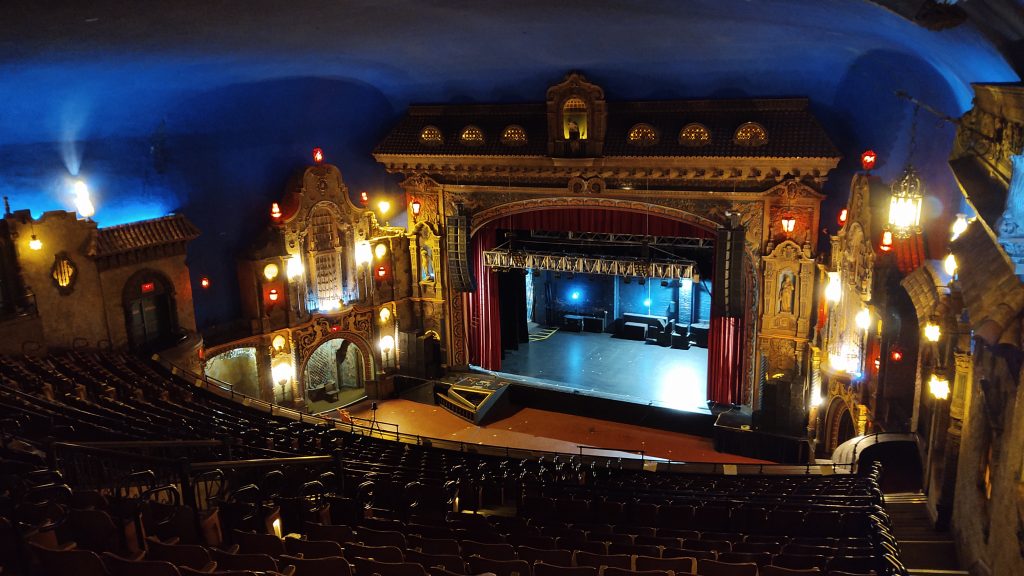
When Chuck organized a private tour of the State Theatre in Kalamazoo, I was thrilled on many different levels. First, I hold fond memories of attending a Billy Bragg concert with Chuck, Martin and Brian in 1988 when we were college students at Western Michigan University. After the concert we took a ‘self-guided’ tour of the dressing rooms and back alley. Secondly, as a community theater performer and ‘enjoyer,’ I was looking forward to taking a “peek behind the curtain.” Theaters are fascinating to me!
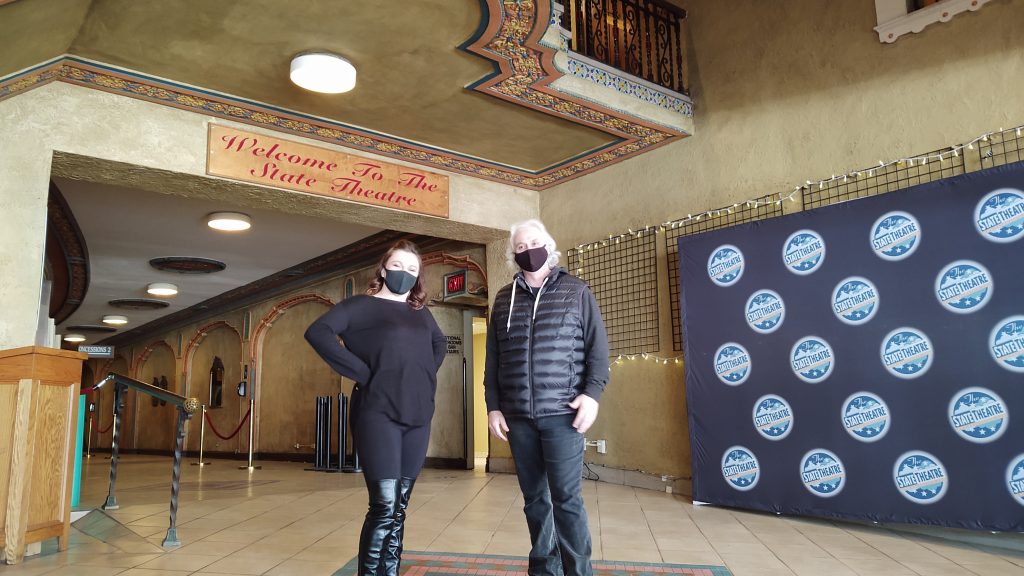
A Look Behind the Curtain
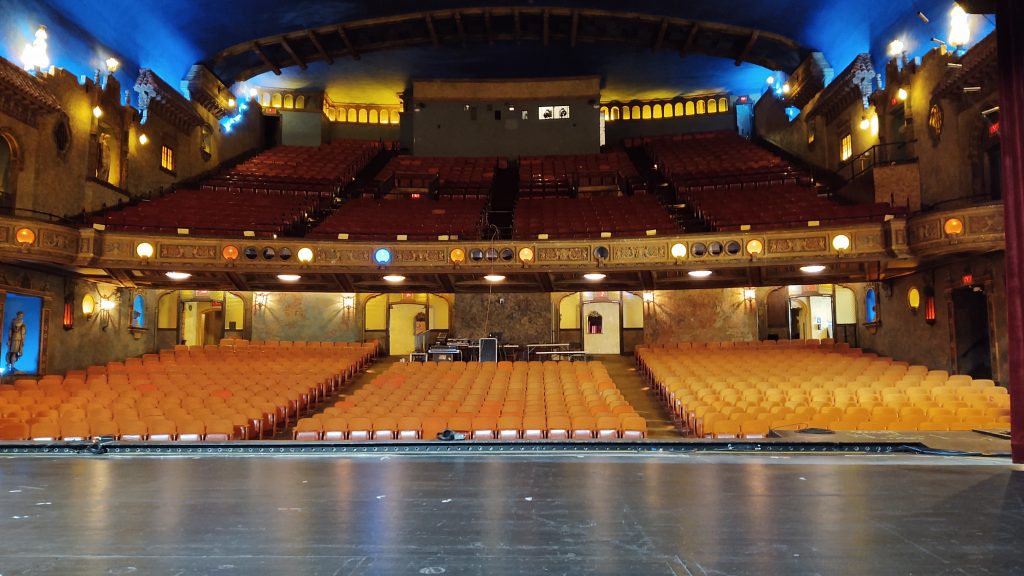
Here’s a ‘look behind the curtain.’ (Do you see what I did there?)
From the stage I looked up to the fly tower behind the proscenium arch. The proscenium arch is the arc above the stage. Actors know it as ‘the fourth wall.’
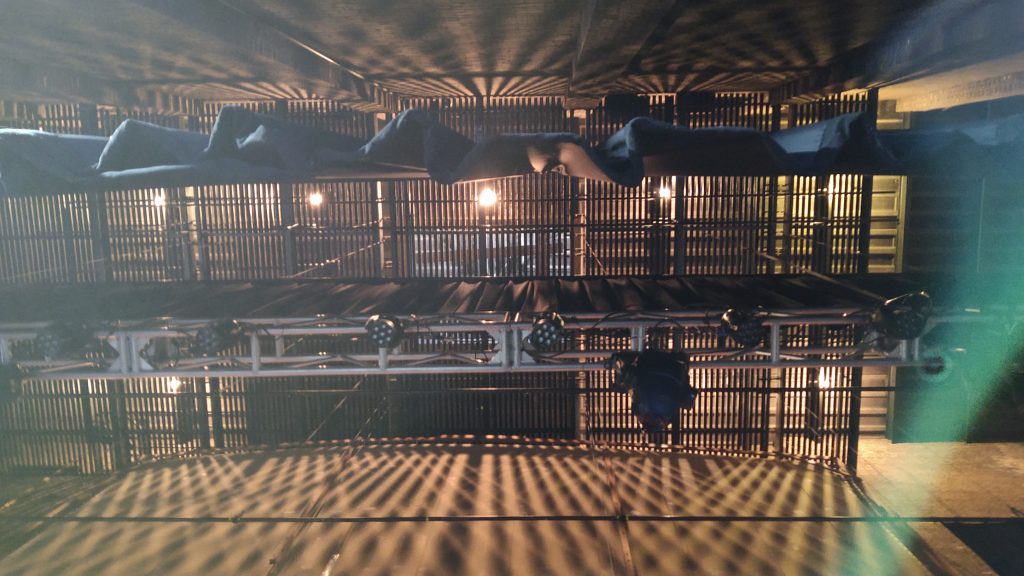
To our right were the ropes used for the fly tower. These adjust the lightbars, backdrops, curtains and sometimes people during their acts.
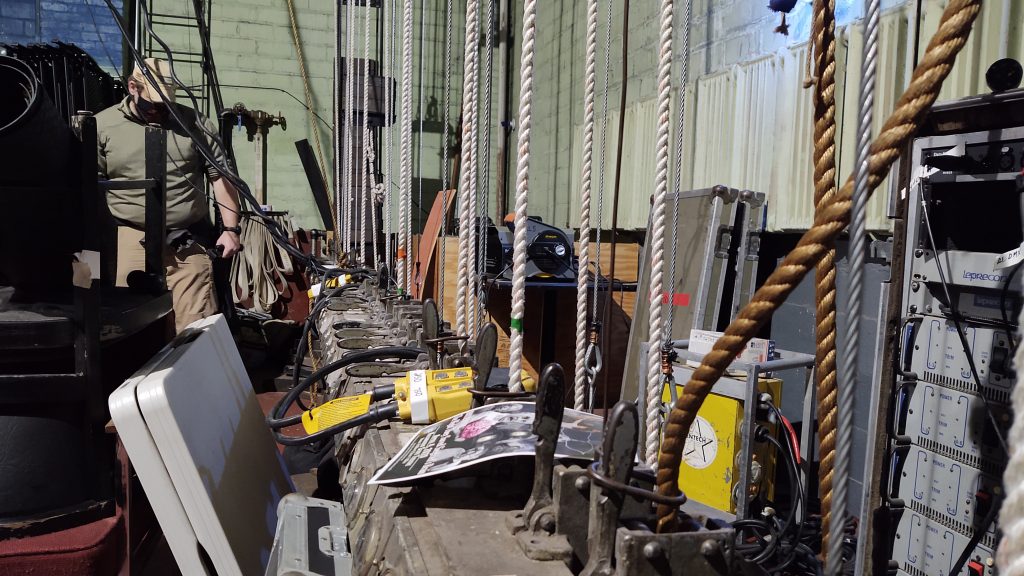
Rachael led us behind the ropes to look up the side wall. “See those sliding doors?” She asked. I wouldn’t have noticed them on my own. “These lead to the dressing rooms upstairs.” I was puzzled as to why there were doors at those levels.
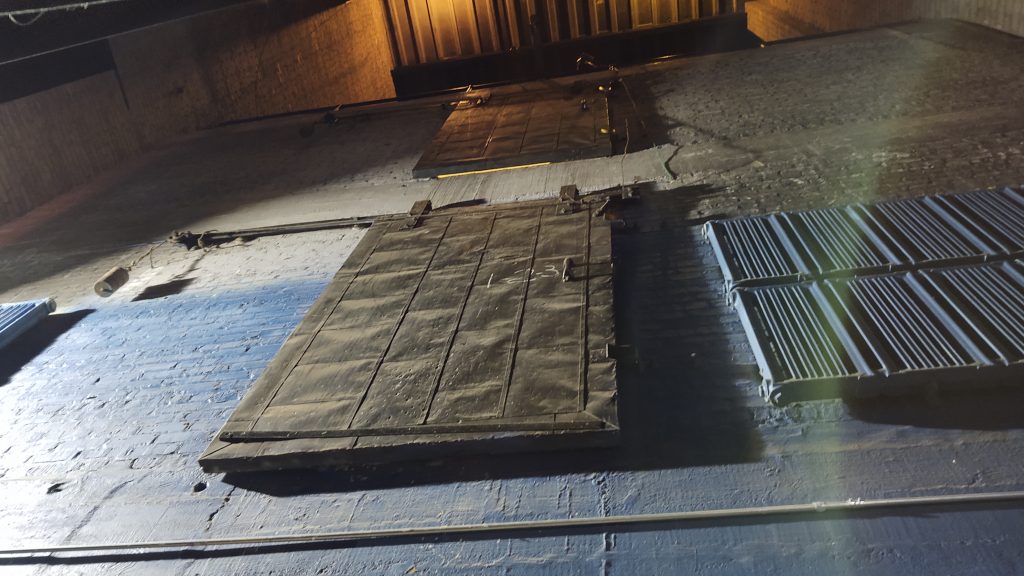
As a college kid, I hadn’t noticed the intricate, Spanish styled décor of the theatre. At that time I had been focused on my friends, the concert and sneaking around afterward. Now, I stood in awe of the carefully designed and refurbished Vaudeville showplace which has entertained Kalamazoo residents for decades.
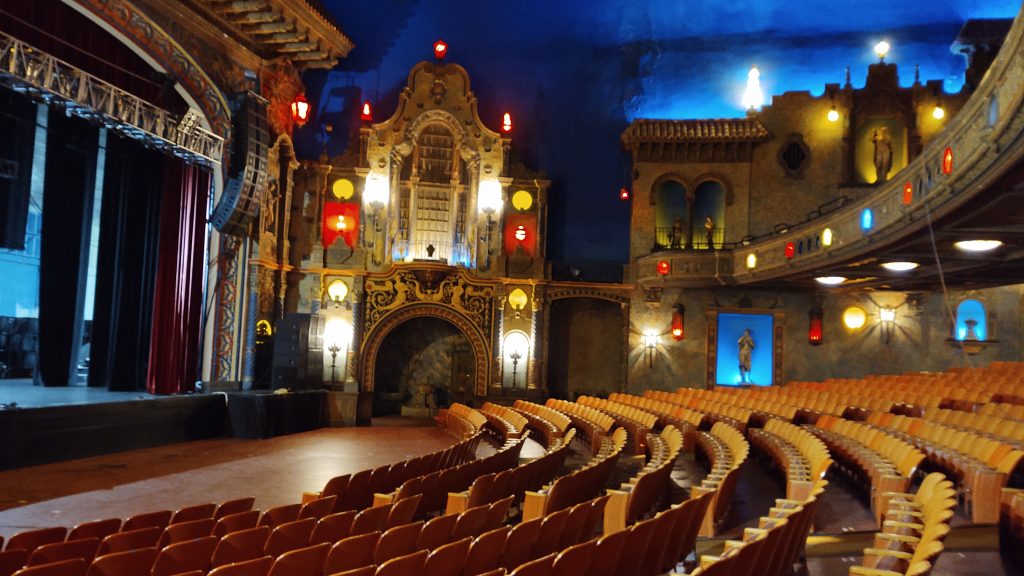
of this “Spanish Courtyard” design.
Vaudeville – A Quick History
The Vaudevillian-style entertainment tradition was started by Tony Pastor. Antonio Pastor (1837-1908) was known as the “Father of Vaudeville.” Although he preferred to use ‘variety’ instead of Vaudeville.
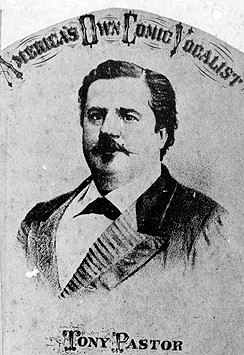
Photo Credit: Travalanche
At nine years old he had started singing at P.T. Barnum’s Museum in New York City. (As many of you know this was the start of the Barnum and Bailey Circus which was recently featured in the Disney movie, “The Greatest Showman.”)
Just after the Civil War broke out in 1861 Tony performed at a grungy music hall simply called “444” located at 444 Broadway. With his circus performing background he developed shows with a diverse array of talent to entertain New York City residents and travelers. Keeping the look of a ringmaster, complete with a handlebar mustache, Tony would personally greet patrons as they entered the theater for a show.
By 1870 “Variety Theaters” were replacing formal concert halls. As workers began to have more free time, they enjoyed an assortment of acts including big band, dramas, opera, ballet, juggling and later short films. It was the first production style to cross economic and class barriers. Vaudeville shows brought smiles in small towns across the nation starting in the 1880’s as well as on stage in New York City.
The Barton Organ
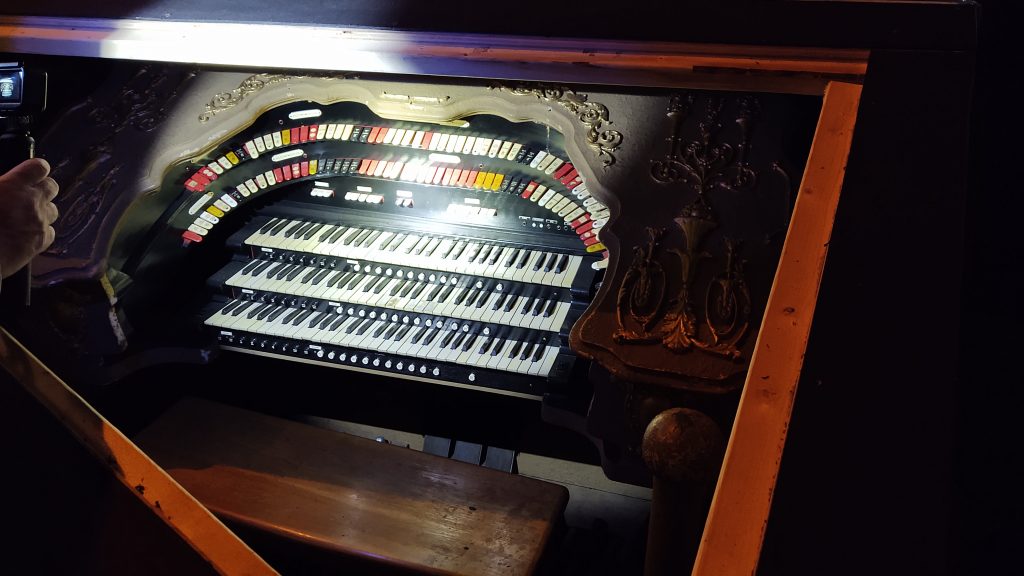
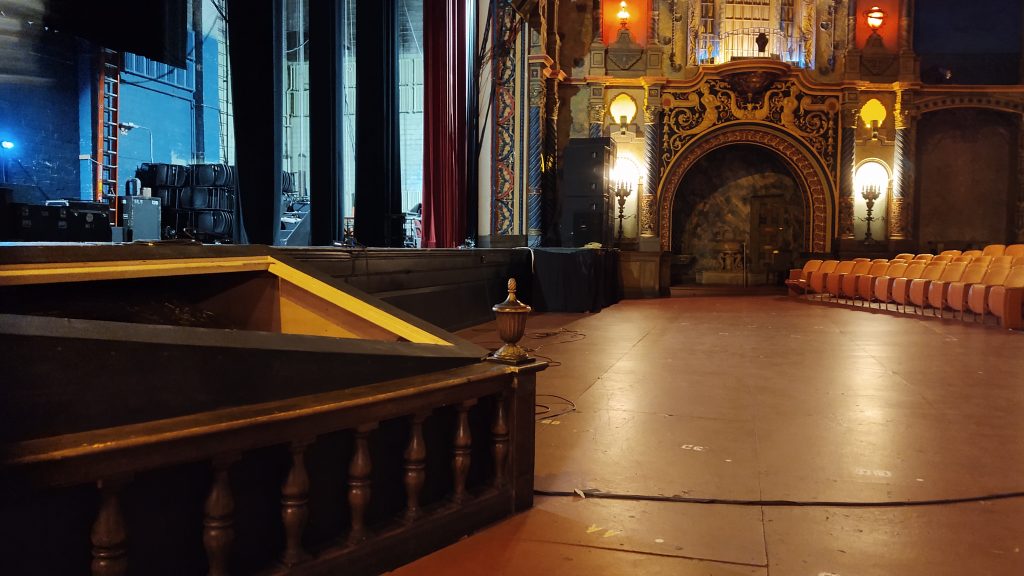
lowered.
The organ pipes were cleverly hidden behind the ornate Spanish decorum along the sides of the stage.
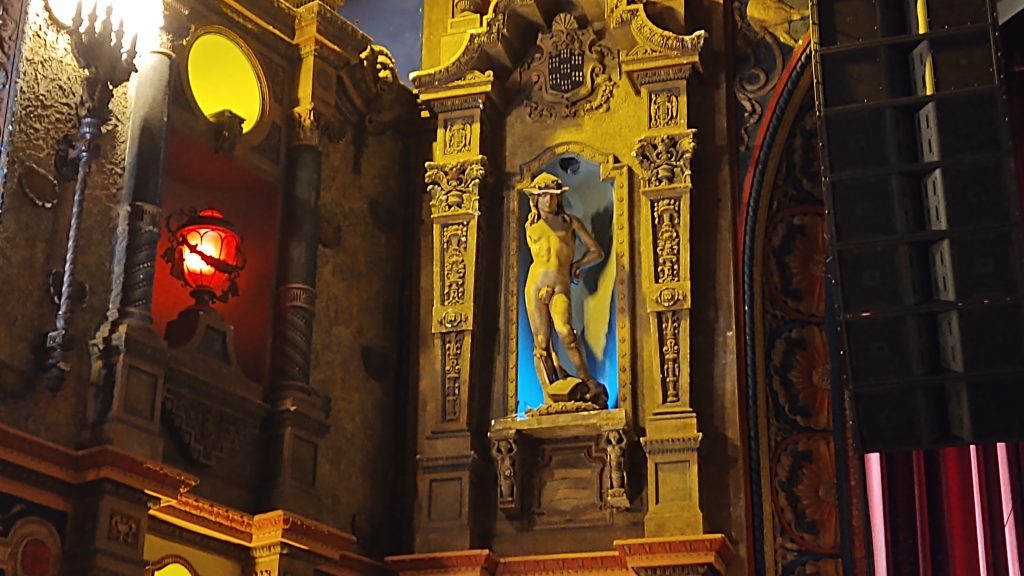
There were two main organ companies in the Vaudeville days: Wurlitzer and Bartola. The Grand Rapids Public Museum has the Wurlitzer organ from the Roaring ’20’s restaurant. The museum features their Wurlitzer in holiday concerts, accompaniment to silent movies and children’s stories read aloud with organ sound effects. I recommend these GRPM shows.
(Sadly, the Barton organ at The State Theatre has had several of the pipes broken caused from roof damage and the renovations that took place in the 1980’s. It no longer accompanies shows, but sits silently holding memories.)
Renovations 1964
In 1964 there was some modernizing of the sound and light systems as well as replacing the seating and the marquee. The cooling system received updates, too. This system works by pulling cooler air up from the basement.
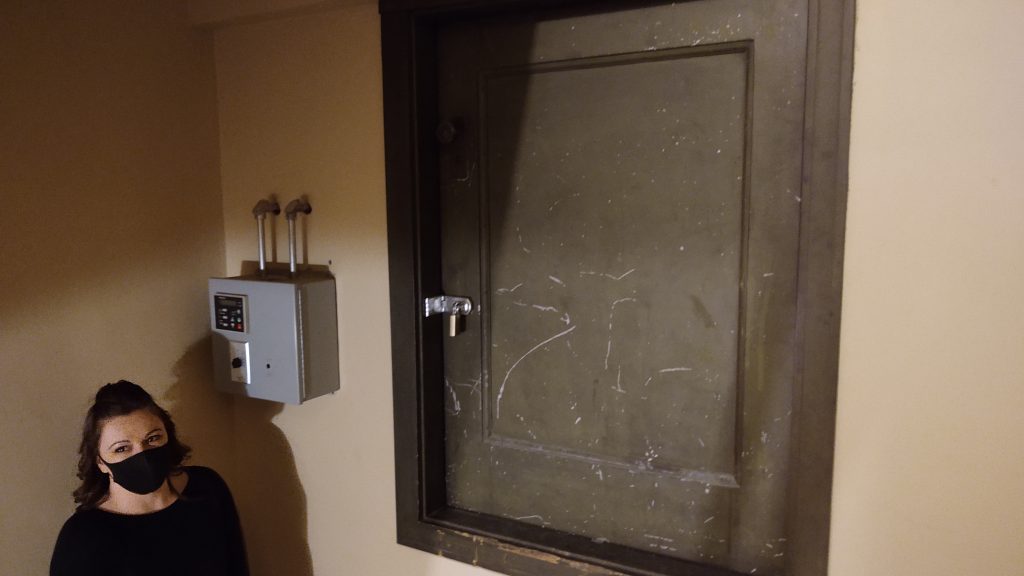
The Marquee
The Kalamazoo State Theatre has carried on the Vaudeville welcoming tradition for decades. They have featured local talent and artists from around the nation. Movies have been shown here as well. People have rented the theatre for private parties, too. The marquee has kept the public informed.
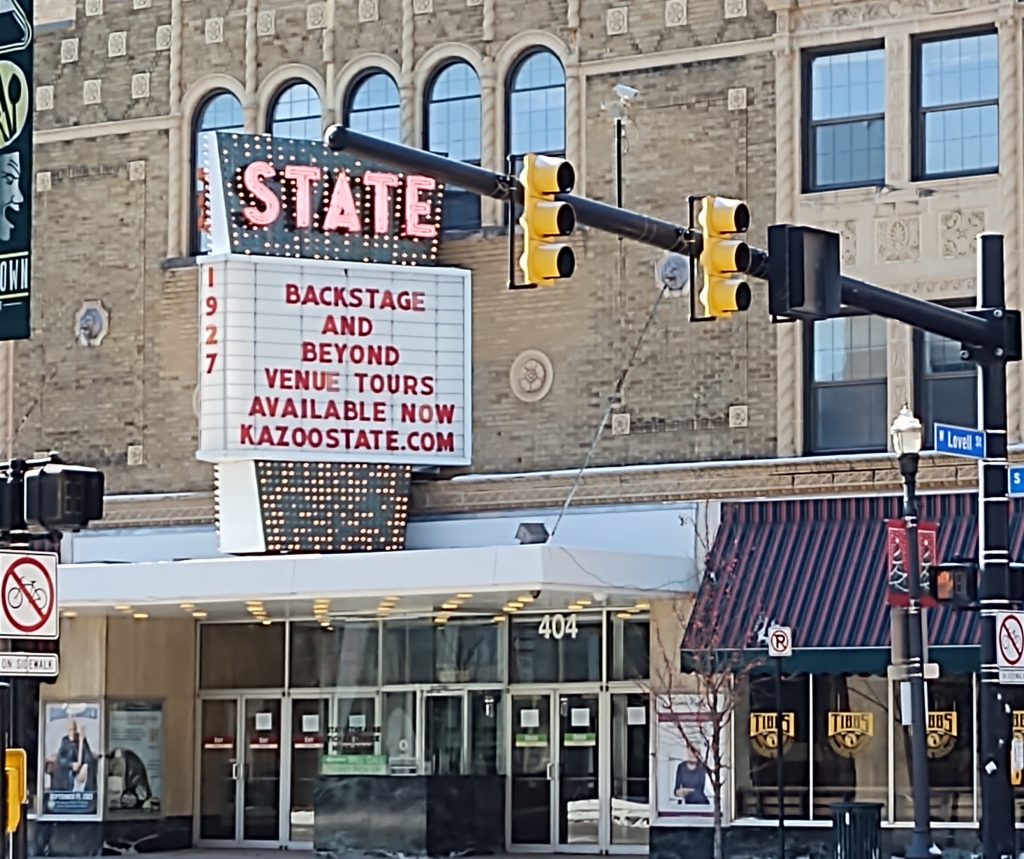
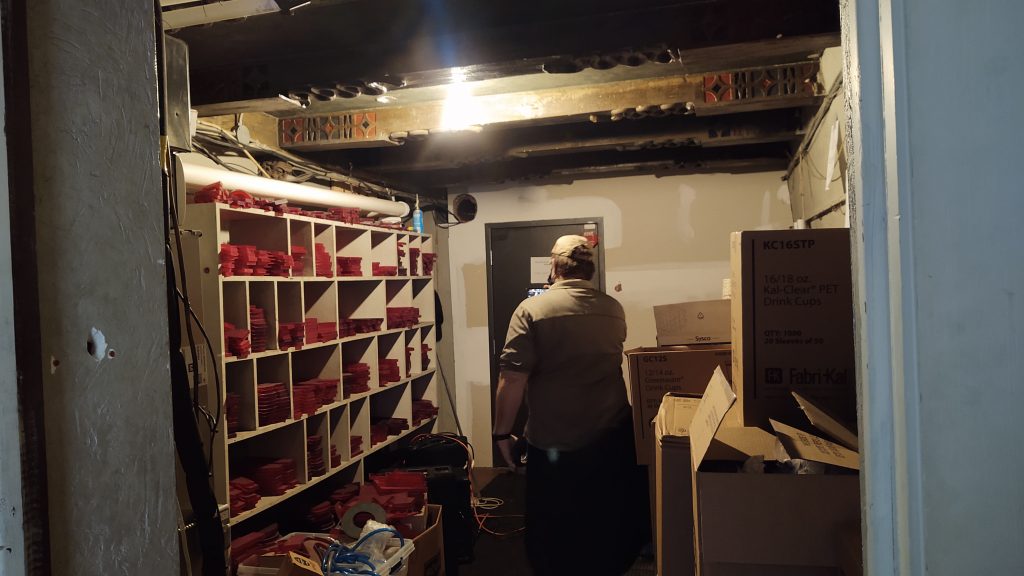
The Sound and Light Booth
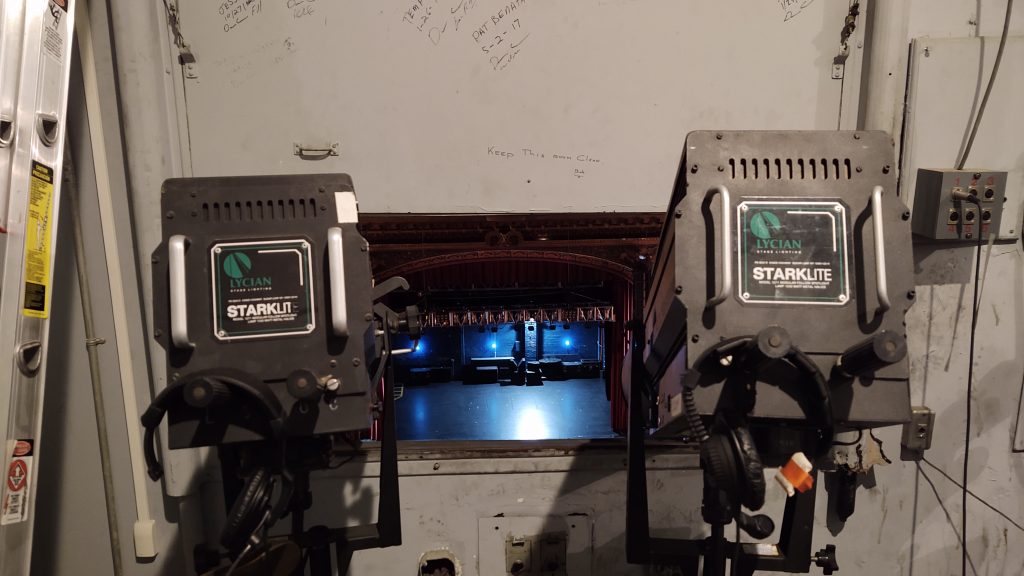
If these walls could talk!
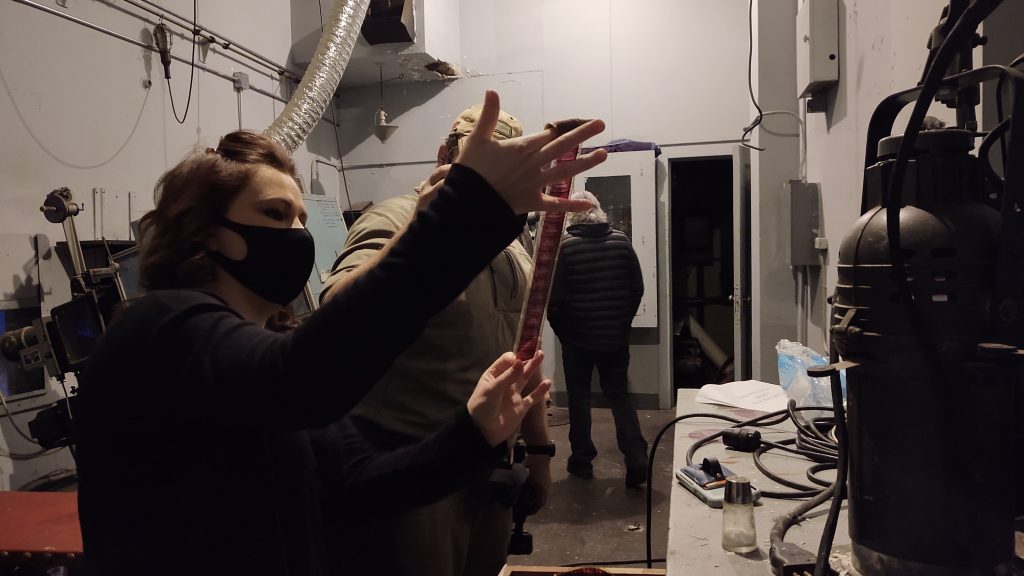
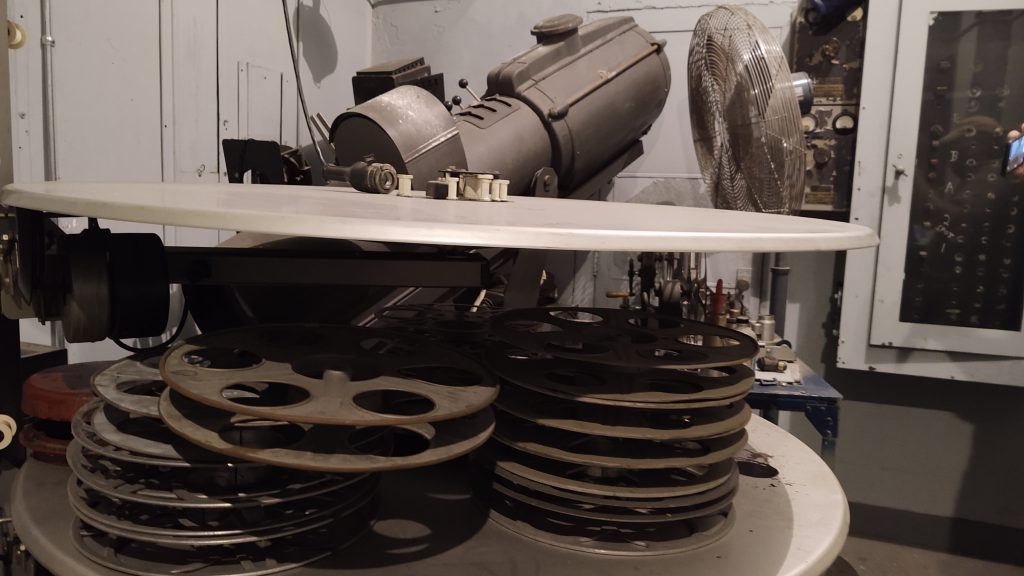
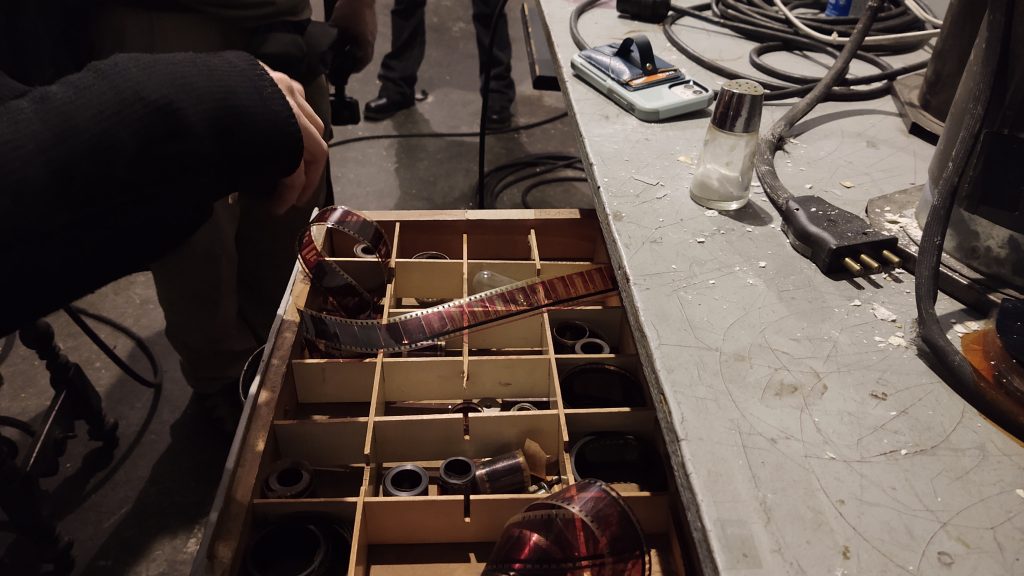
The Dressing Rooms
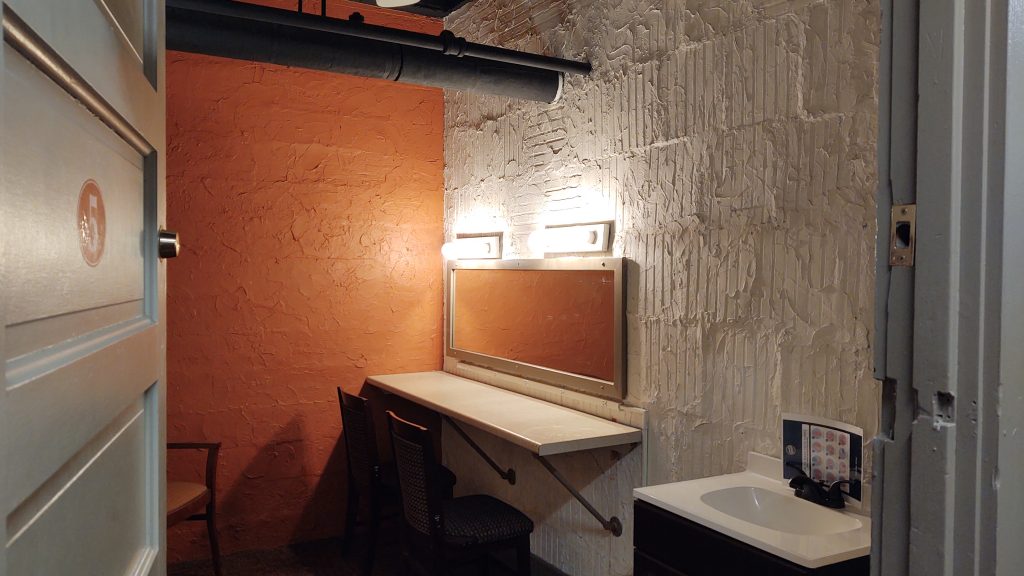
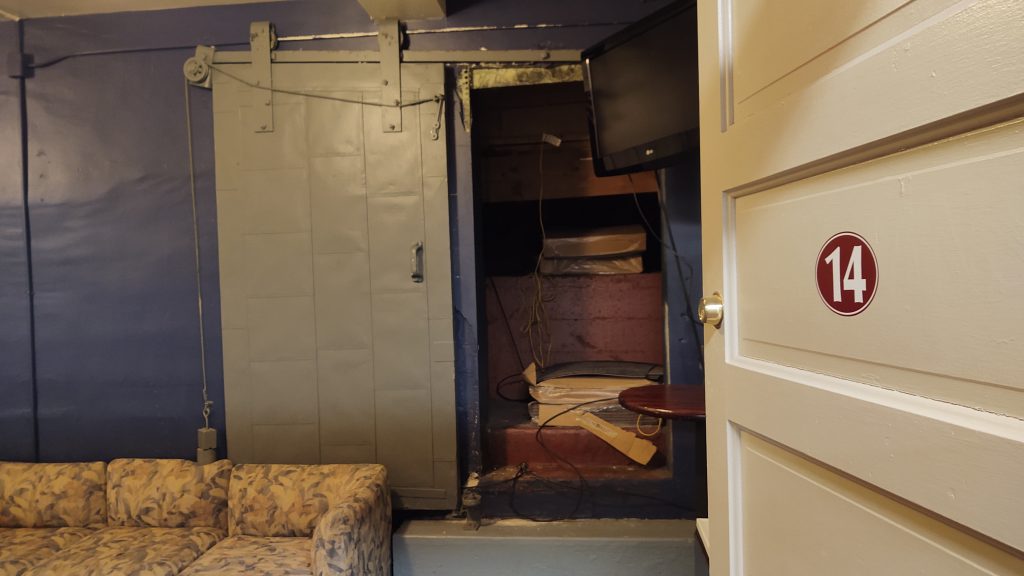
The “green room” is the term for the performers’ waiting room right before going on stage. This white, sliding door allows the musicians or actors to climb a few steps to access their awaiting audience.
“Save The State” – 1982
W. S. Butterfield Theatre, Inc. closed The State Theatre in 1982. The plan was to tear it down and build a parking structure. Locals and theater lovers created the organization, “Save The State.” The group worked tirelessly to preserve the structure.
In 1985 The Hinman Company purchased the property. They typically bought multi unit buildings, but this theatre spoke to Roger’s heart. He’s the owner of the sixty person company. Our guide, Rachael said, “He purchased the theatre in 1985, and had often attended movies at the theatre as a child. Essentially the theatre is a passion project, and very important to all who work here.”
Paint was scraped to find the original colors hidden beneath. Partnerships were developed with Western Michigan University. Willing professors were assigned a single design to restore. They would have their volunteer students paint the repeated architectural feature. (roses, snakes, angel)
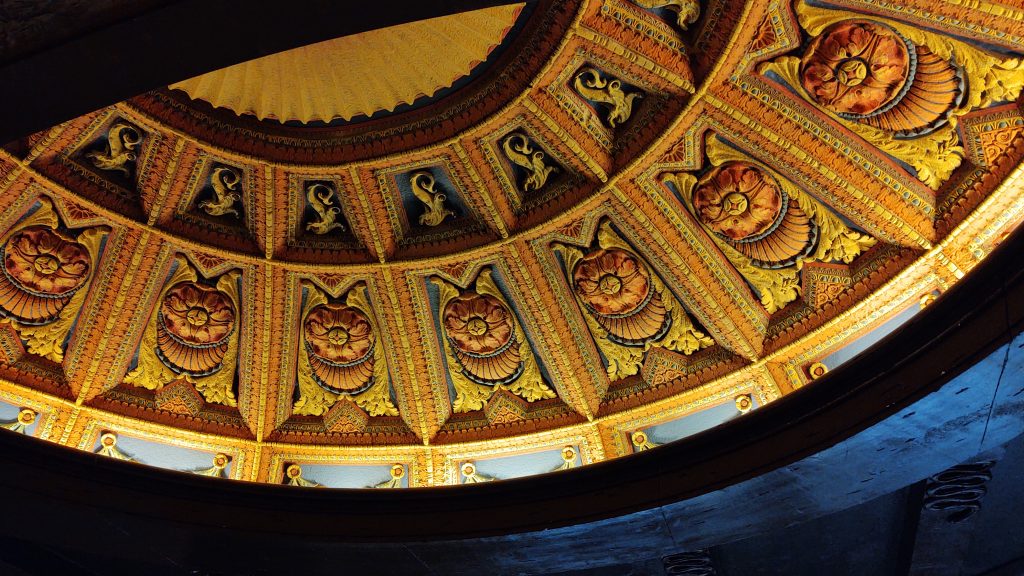
The detail in the architecture is remarkably unusual. It must have been painstakingly consuming to paint these intricate patterns.
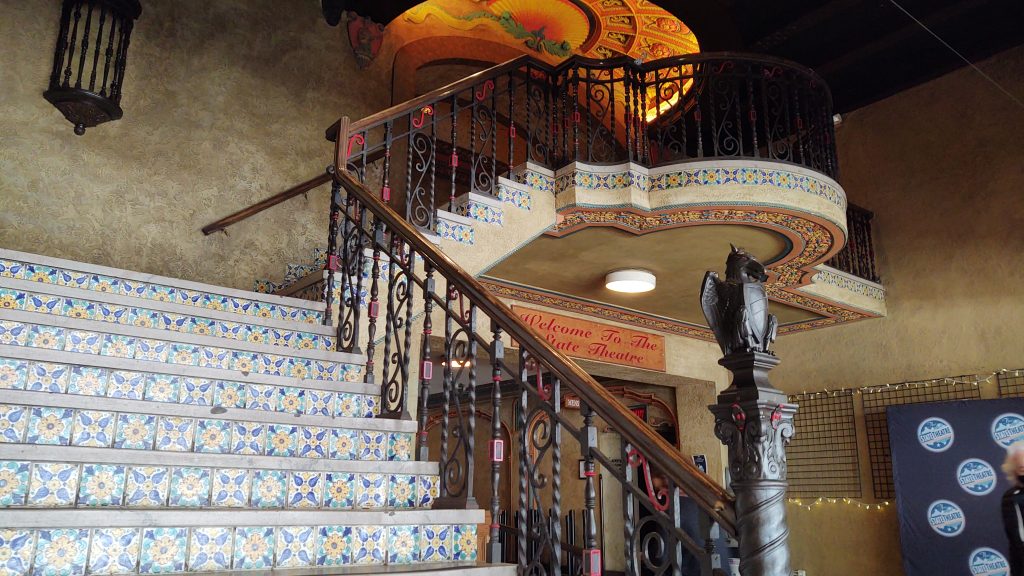
Visitors know that they will soon be transported to an art-filled dimension.
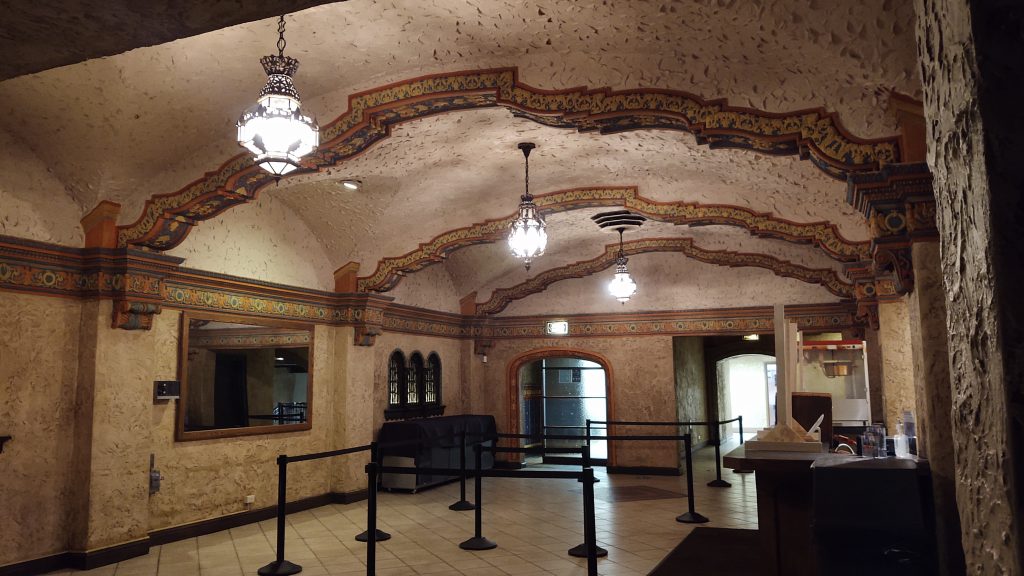
Poppins and Da Viking Attend A Concert
This is where we entered the story of The State Theatre. As a college student in 1988, I’m embarrassed to admit that I hadn’t noticed the detail in the newly renovated theater. I wish I had appreciated the artful décor. I was more curious about the singer, Billy Bragg, and the cohorts in my group.
During the concert our friend, Brian, stated, “Play that one song!” but it went unheard. So at a quiet moment I called out the phrase. Billy Bragg turned toward my voice and laughed, “Why that’s the best heckle I’ve heard all night!” His British accent was charming.
Afterward we snuck into the alley and entered dressing rooms, hoping to meet Billy Bragg. We had never located him but we were satisfied with the exhilaration of being in a secretive space.
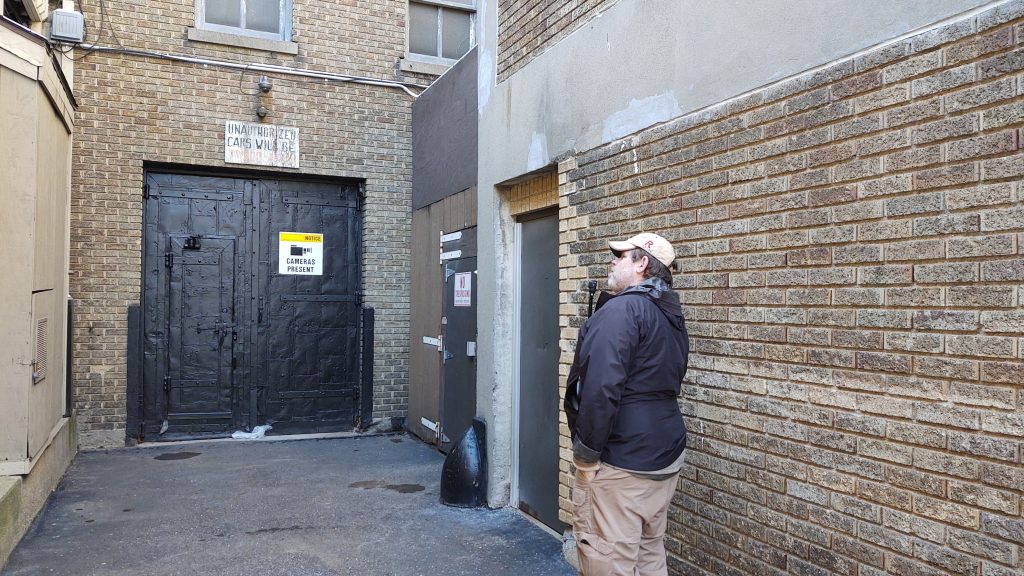
Other Concerts – 1990’s
In the early 1990’s during a Red Hot Chili Pepper’s concert this statue (below) was “crowd surfed.” I asked if she had a name. Rachael said that these statues had been ordered out of a catalog and no specific names were given to most of the relics. Some other headliners at that time were The Smashing Pumpkins and Pearl Jam.
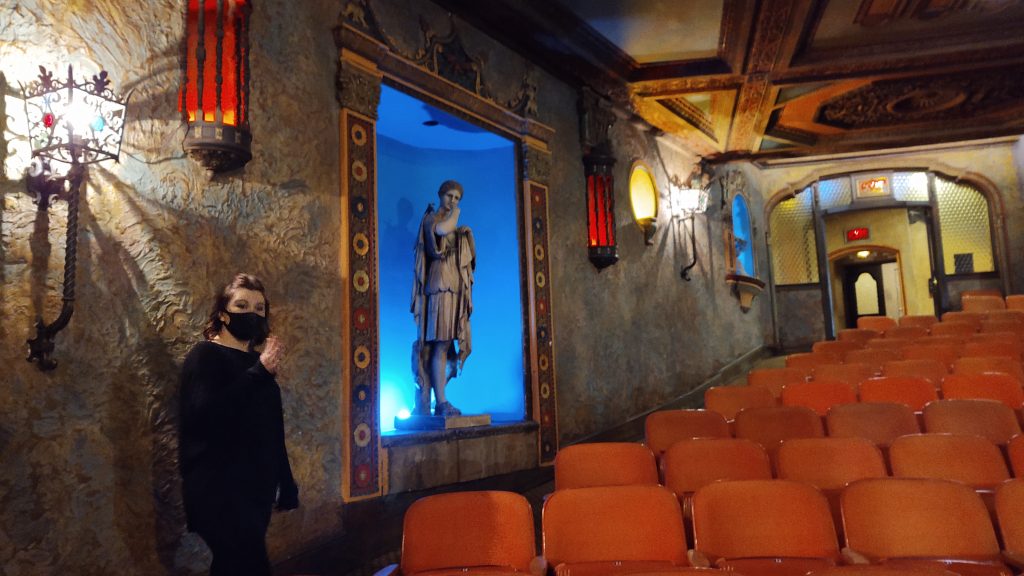
The Shows MUST Go On!
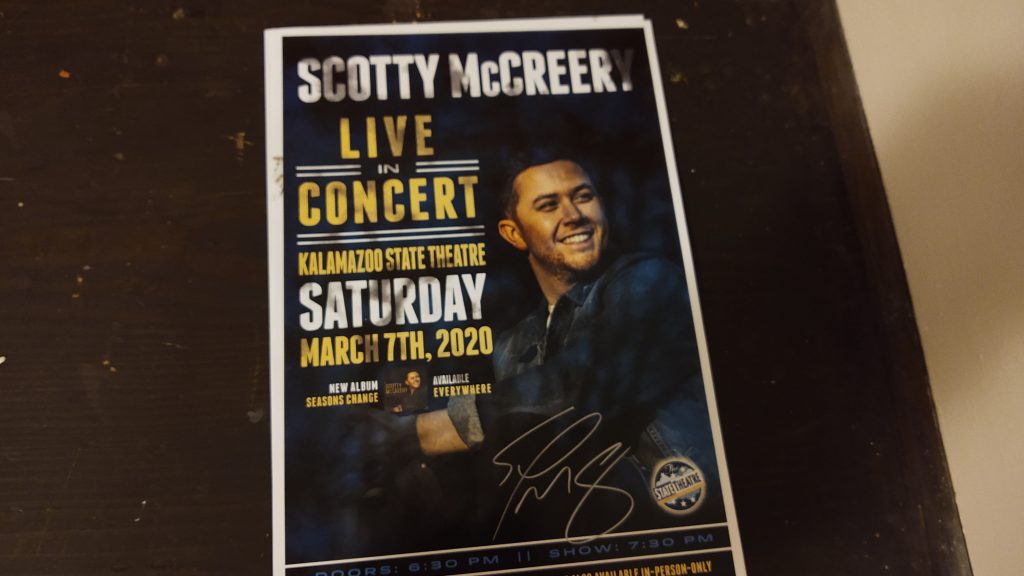
Roger E. Hinman’s daughter, Stephanie, is now the Executive Director of The State Theatre board. Harry Phillips, the Director of Marketing and Development, explained how Stephanie invited the staff to brainstorm ideas about how to connect with the public during the pandemic. He praised her willingness and open minded leadership.
With their liquor license in place and the city allowing The State Theatre to use part of Burdick Street, they developed “State on the Street.” Performers sang on the awning next to the marquee. Audience members could be safely distanced in a roped off area. Adult beverages were purchased indoors. People would peek into the atmospheric theatre. So, the idea for the ‘behind the scenes tours’ was created.
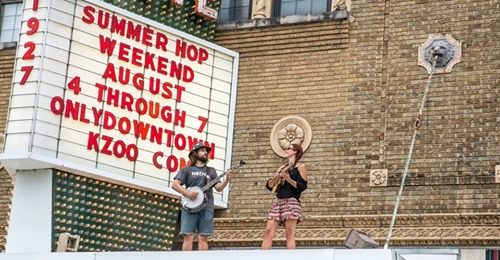
Harry and Rachael along with their team organized live stream concerts, too. Selling tickets to such an event demanded a new understanding of technology. Using four cameras during the streamed concert created a ‘television production protocol’ which theater people previously haven’t had to navigate. Luckily, Harry had worked at Channel 3 and had some experience with these skills. It was successful!
Creating these new methods to connect with the public during a pandemic has been an impressive undertaking. Harry was used to juggling three shows’ logistics while planning another three shows for the following week. Simultaneously he would be organizing upcoming shows with promoters and agents.
With the shutdown in March 2020 over 70 Michigan live music venues including The State Theatre, Seven Steps Up (Spring Lake) and the Intersection (Grand Rapids) have had to watch their revenues slip through their fingers like sand at a beach. Leaders from these organizations formed The Michigan Independent Venue and Promoter Association (MIVPA). It’s an alliance which has worked with lawmakers to help fund grants to bridge this unprecedented time. On December 19th, 2020 Bill 748 “Michigan Strategic Fund” was passed to help small businesses and music venues.
The MIVPA was formed following the National Independent Venue Association (NIVA). Over 2,000 national venues throughout all fifty states have joined this movement. #SaveOurStages
Let’s do our part to support local businesses, art and music venues so we will still be able to enjoy these life-enriching activities in our future. I am sure you are able to recall your very first concert you had attended and how it fortified your life. Seeing Billy Bragg gave me a yearning to see future State Theatre productions and participate in community theater myself.
A special “Thanks!” goes out to Rachael and Harry for their determination and creativity during this unsettling economic era. Their knowledge and passion were evident throughout their tour. Here’s the video Da Viking, Chuck, made from our tour ‘looking behind the curtain.’
Resources:
Rachael Reinholtz, House Manager and Special Events Coordinator
Harry Phillips, Director of Marketing and Development
The State Theatre 404 S. Burdick Street, Kalamazoo, MI 49007
Phone number: (269) 345-6500
https://www.kazoostate.com/about/history/
https://travsd.wordpress.com/2010/05/28/stars-of-vaudeville-162-tony-pastor/https://travsd.wordpress.com/2010/05/28/stars-of-vaudeville-162-tony-pastor/
https://hinmancompany.com/portfolio/kalamazoo-state-theatre-kalamazoo-entertainment/https://hinmancompany.com/portfolio/kalamazoo-state-theatre-kalamazoo-entertainment/
https://www.grpm.org/organ/
https://www.sentinel-standard.com/story/entertainment/music/2020/12/09/michigan-venues-promoters-form-new-trade-group-to-rescue-concert-businesses/115127060/

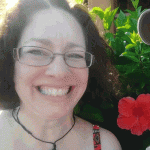
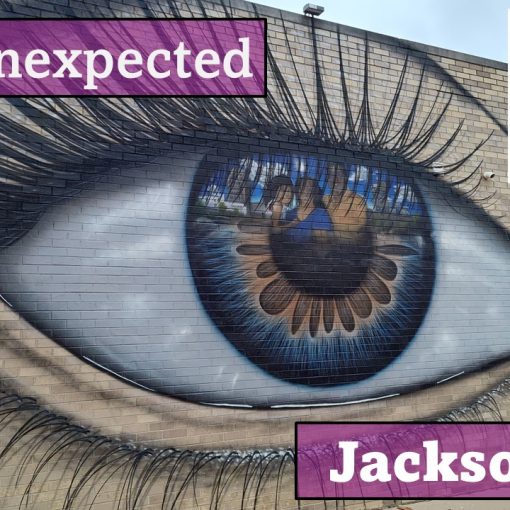



One thought on “The State Theatre – Kalamazoo”
Loved this. I don’t remember seeing it earlier! So sad that such a historical place is closing. Loved the decor!